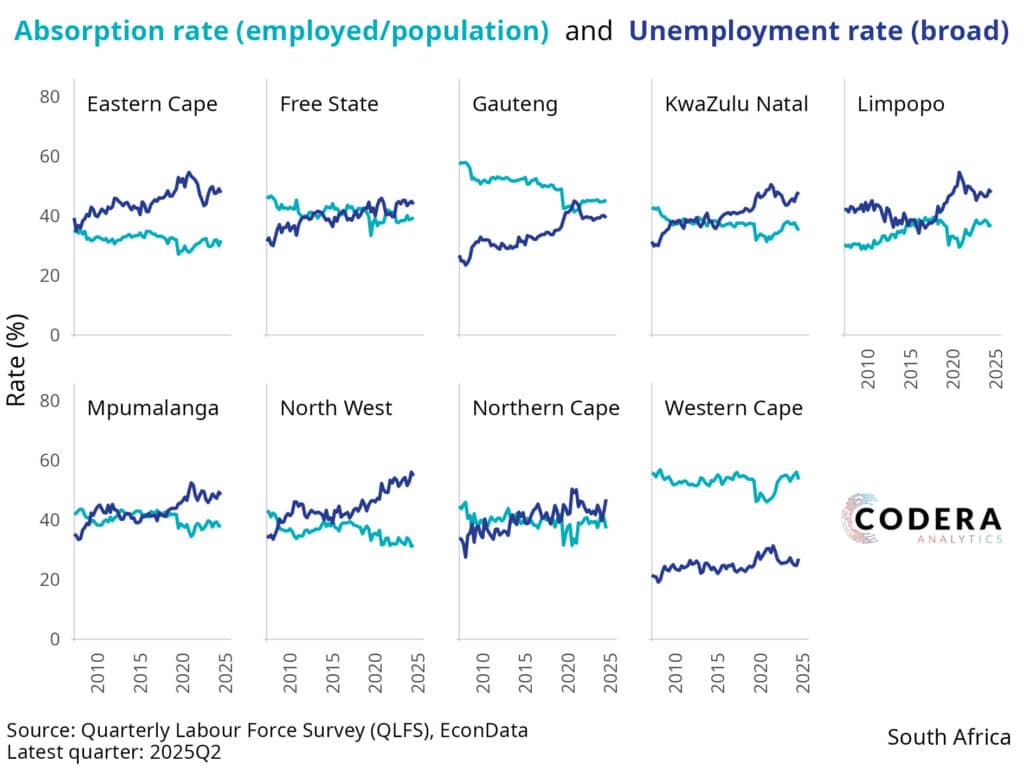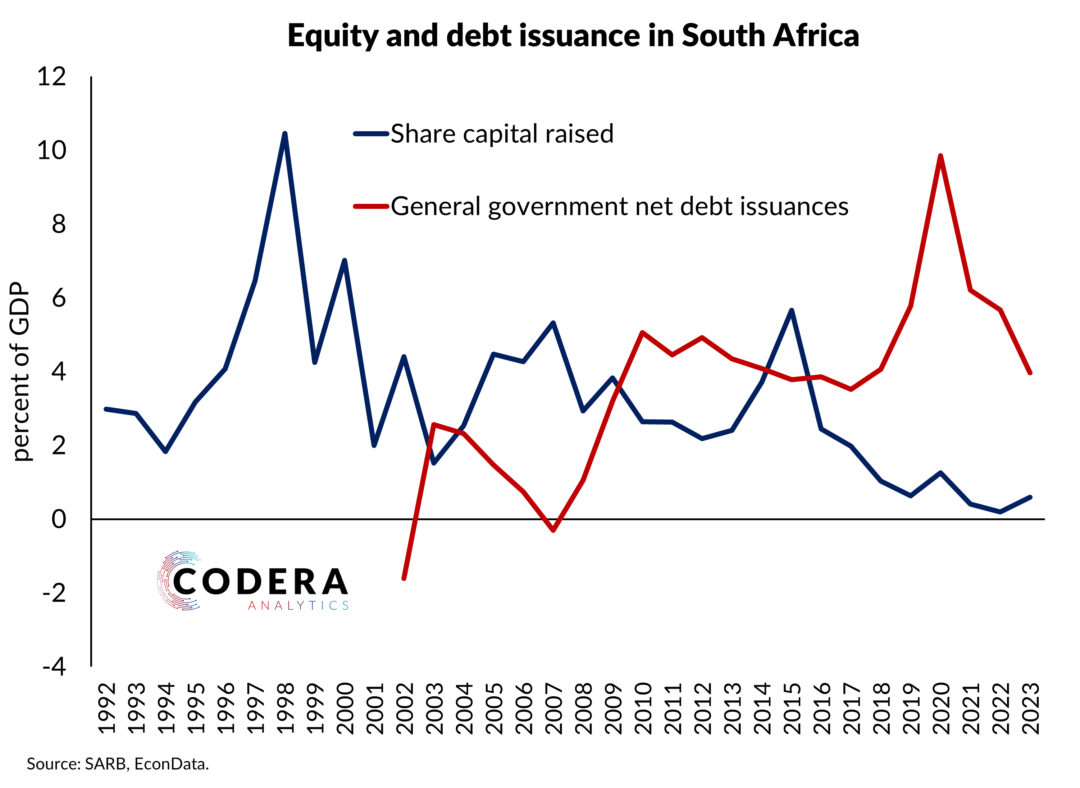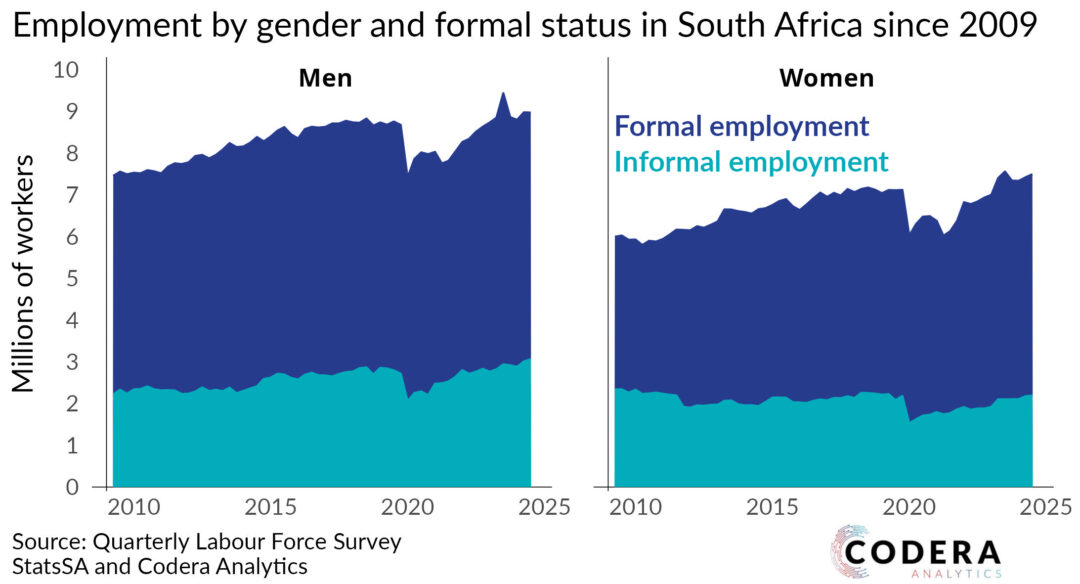There has been a lot of debate about the measurement of the informal economy in South Africa. There has been some confusion in the media about how the sector is measured and how StatsSA is planning on amending its methodologies. StatsSA is adjusting their measure of informality in the QLFS, not their measure of employment as some have reported. StatsSA have been planning the revision for several months already, and have issued a press statement on 13 August to counter the misbelief that they have adjusted the survey in response to Capitec’s Gerrie Fourie’s criticism.
The update to the questionnaire is not about unemployment. The QLFS has always included the informal economy in its household survey since its inception. The dataset even includes derived variables that indicate informal employment or whether the person works in the informal sector or not. Their public metadata document for 2025Q1 details how they measure informal employment as:
The Infempl variable is intended to identify persons who are in precarious employment situations. Informal employment includes all persons aged 15 years and older who are employed and work in:
- Private households and who are helping unpaid in a household business; or
- Working for someone else for pay and are NOT entitled to basic benefits from their employer such as a pension or medical aid and has no written contract; or
- Working in the informal sector (see below).
Formal employment includes all persons aged 15 years and older who are employed and who do not meet the above criteria. Employers and own-account workers aged 15 years and older are included in the category ‘Other’.
The questions that this variable is derived from are:
- Status (Derived variable)
- Sector2 (Derived variable)
- Work for whom (Question 4.5)
- Contribution to pension or retirement fund (Question 4.6)
- Medical aid or health insurance contributions (Question 4.9)
- Employment contract (Question 4.11)
The questions from which the informal sector Sector2 variable is derived are:
- Work for whom (Question 4.5)
- Income tax deducted (Question 4.10)
- Business registered for VAT (Question 4.13)
- Business registered for income tax (Question 4.14)
- Number of employees (Question 4.16)
The revision is about the definition of the informal sector, where the size of the business, i.e. the “number of employees” above, will no longer be included in the definition. Rather, business registration will be focused on more as the definition of formality, with VAT registration and accounting practice for tax still being considered, now in conjunction with the national business register from the Companies and Intellectual Property Commission (CIPC). StatSA will essentially count the same people as employed regardless of whether they work in the informal or formal sector, before and after the definition update.
The advantage of the way the QLFS data are published is that practitioners can use the underlying estimates for their own analysis. For example, we showed in an earlier post that while the official unemployment rate is currently around 33%, it would be closer to 23% if one considers subsistence farmers and scholars and homemakers as employed, and when the entire population (i.e. not restricting to the working-age population) is used in the calculation based on official data. If one includes those people who have lost hope with finding work, or have not looked for work in the four weeks prior to their survey interview in the definition of the narrow unemployment rate, it would rise from around 33% to closer to 43% of our adult labour force in South Africa (and 71.7% of youth aged 15–24). To show how the expanded definition of unemployment has changed over time, the graph below shows broad unemployment trends by province.
Our EconData platform makes it easy to use public domain datasets like the QLFS for workflow automation.

Aidan Horn

